What’s New In Warzone: Resurrection 2.0?
November 1, 2016 by crew
During the summer, I joined a team of people who were tasked with assisting the writers at Prodos Game with the proofreading and balancing of the second edition rules for Warzone: Resurrection.
While the main objective of WZR 2.0 was to clarify and streamline those rules, this update also ushers in a number of important changes that could easily be missed on first glance and I have summarised them below for your convenience!
Squad Entries
Squads & General Changes
The stat line found on the 2.0 squad profiles contains several changes, most notably the addition of the DEF and SZ stats. The former is a reflection of how well the model can defend itself in close combat, representing a penalty to the opponent’s close combat skill when attempting to attack it. The latter is an approximation of the model’s size and a value above 0 will make that model easier to hit in combat (and replaces the Bulky rule in the case of vehicles).
In some cases this value might be referenced as a restriction (models bigger than SZ 2 can’t fit in a transport – more on those later) but it also indicates which screen should be positioned behind a model if there is any doubt when establishing line of sight.
Most models have lost a point or two of willpower (WP) or leadership (LD) and while armour (A) values may seem to have increased, they represent the same amount of protection; The old weapon table has been phased out and now the total strength of the attack is subtracted from the target’s armour (instead of each point over 10 reducing armour saves by one).
To make the math work, most ranged weapons have had their strength reduced by two. Damage types have also been removed (Piercing, Blast, Plasma etc.) so calculating an armour save is much simpler. For example the humble infantry rifle – the ‘baseline’ weapon when it comes to weapon strength – is now St 10 instead of 12. Subtracted from the equally humble infantry armour which now has a baseline of 20 – the result is a save on a 10 or less.
This is exactly the same as it used to be (ST 12 = -2 to armour, A = 12 so the old save used to be 10) but ultimately it is simpler and faster. As an aside, there is no longer a need to push the attack strength up to 18+ in order to get Critical Force.
Now weapons have the trait, or they don’t, and you cannot gain it by increasing the strength of the attack.
Finally, the abilities have been re-worked. Many similar “unique” abilities have been merged into a common ability that can now be found in the main rules rather than being defined on the squad profile itself.
Character Changes
While all squad point costs have been reviewed and in most cases, lowered, this is particularly noticeable amongst the characters; Many of the close-combat orientated ‘named’ characters are now priced around 100 points and there are now plenty of characters in the 30 – 50 point range who bring some interesting abilities to the table.
Combined with the fact that almost all characters now have a minimum of three wound, they are a much more attractive prospect and taking an extra character or two in most lists shouldn’t make you feel as though your army is handicapped in some way.
In fact, since all games must feature at least one character to act as the army commander, the price reduction is such that most players should now be able to field one extra squad in their army lists for the same points total.
Finally, characters are no longer warlords or lords. The character with the highest LD in your force is the army commander but all characters can join or leave squads (that don’t already have characters) during the game.
This is particularly important since Shielded has been dropped. If you want someone to take a bullet for your commander, you had better make sure he has joined a squad to protect him!
Vehicle Changes
The main change to vehicles is how they take damage; they no longer have Structure Points but Wounds just like infantry (so Critical Damage no longer needs to exist) although there is a distinction between Heal and Repair so you can’t burn a resource to give a vehicle Heal (3).
Weapons don’t have AVV anymore so now vehicles simply have a very high armour value which is reduced by the attacking weapon’s strength as normal. Dedicated anti-vehicle weapons now have the Armour Piercing(X) ability, which is added to the weapon’s strength when attacking vehicles (something similar also exists for non-vehicle models – Precision(X) – which is found on a variety of weapons including shotguns and sniper rifles).
Another interesting point to note is that the Heavy Vehicles now all have a ‘Light Vehicle’ profile too, albeit with weaker armour, fewer wounds and a corresponding drop in the points cost. This is good news for those of us with such vehicles in our collection as they rarely see play; I’m particularly looking forward to fielding my Black Widows in their “Wolf Spider” guise!
We also have transports now (everybody gets access to the Mule from the Cartel army list but some factions have their own dedicated transports as well) and these should help slower or more vulnerable squads move up the table to get into position.
Cards
There are two significant changes to the cards you will use in the game. The first is that the old strategy, tactic and gear cards which used to ship with the starters and blister packs, and could also be purchased via a faction mega deck...are no longer used.
Instead, there is one global megadeck that will be used by all factions although many of those cards are dual purpose with one common effect and another faction-specific effect that you can only chose to play if it matches your army. Of course, using these cards is still an optional part of the ‘advanced’ game.
The second change regards the resource cards; previously they were tied to the commander of each troop-type squad and were lost upon his death. Now they are tied to the squad itself and as long as at least one model from the squad is still alive, the resource card remains in play.
This makes the ‘assassination’ of a squad commander slightly less important from a resource perspective, although the LD penalty the squad suffers when it is led by an acting squad commander is more of a problem now that LD has dropped across the board.
Gameplay
Not much has changed in terms of the basic game structure, other than the addition of a distinct ‘End Phase’ to separate out the things that happen at the end of one game turn and the things that happen at the start of the next.
On a related note, there are now a number of powers and abilities that DO NOT end during the End Phase but last until the squad that used that power or ability is activated again. Importantly this now includes the Sentry action!
Deployment
The second edition rules introduces three new ‘global’ deployment options; Pre-emptive Strike which requires a squad to be deployed in the deployment zone as normal, but before the game starts the models may be repositioned within 6” – including outside of the deployment zone – giving them a 6” head start towards their objective. This happens after Infiltrators have been placed so it also allows you to react to an enemy who has deployed too close for comfort!
Next is Flank deployment which allows models to remain in reserve much like Rapid Deployment but instead of dropping into the middle of the table, they will arrive from a pre-determined table edge.
Finally we have Stalk (nice one Bart!) which can be combined with most other deployment options; Instead of placing the models on the table, the squad is represented by one of three markers which will activate together and move up the board...but your opponent won’t know which one of those markers represents the ‘real’ squad until they are spotted or the squad reveals itself with an attack!
Finally, Rapid Deployment, while not new, has been adjusted to make it less of a sure thing and combined with the changes to template weapons, it should no longer be the devastating turn one tactic that we saw in the first edition.
Actions
Battle Focus – This replaces Aim and has the same effect (conferring a bonus to hit and weapon strength for a single attack roll) but can now be performed for CC attacks too.
This is a great option for CC models with slow, powerful weapons as you can Charge, Battle Focus and then burn a resource to grant a third AP in order to perform the CC attack. There is also a small change to the way targeting a vehicle location works; now if you chose to target a location, you don’t get a bonus to hit the vehicle based on its size.
Charge – The old ‘Engage’ action, renamed because there is also an ‘Engaged’ state and it was a little confusing. The movement no longer needs to be in a straight line, although the model still needs LOS to its target before declaring this action.
There is no longer a strength bonus associated with the charge action – it is simply about movement. Now the bonus comes from the Battle Focus action instead.
Evade – Serpentine! This replaces Hide and imposes a -2 RS or WP penalty to enemies making ranged attacks (shooting or psychic) against the model evading. Importantly this stacks with the penalty from cover and it lasts until the model’s next activation.
This is great for Trenchers, as many tables lacked terrain that would be considered light cover thus their ability to Hide for free (and treat light cover as heavy cover) was largely unused.
Spot – This allows a model to make a check to ‘spot’ a stalk marker. This will force the marker to be revealed if successful.
Sentry – A few important changes here which make Sentry much more useful. First, up to half the squad may go on sentry which is a small improvement over the old two in five restriction. Next, when a model wants to react on Sentry, it is temporarily activated; this allows the model to use abilities (including abilities which have an AP 1 cost) and it can now perform one action of any kind as long as it costs either 0 or 1 AP.
Finally, the model remains in Sentry until its next activation which makes it a more reliable Rapid Deployment deterrent.
Just remember that the restriction on a model performing the same action twice in a turn is still in effect. For example, if you activate a model on turn three and have him perform the Sentry action but nothing happens for the rest of the turn that would require him to react, you can still have him react during turn 4 before his normal action comes up.
But, if he reacted during turn four by taking a shot, he can’t shoot again once he his normal activation for that turn comes up.
Squad Special Actions - These no longer exist.
Ranged Combat
This has been streamlined considerably; The interaction between the attacking model’s weapon strength and the target model’s armour is one part of this effort but cover has also been simplified; Light cover and heavy cover have been dropped and now a model is either in cover (because it is obscured by one or more terrain pieces or intervening models) or it is not.
If it is, the attacker receives a single -4 RS penalty. There is also one new bonus to factor in (the SZ of the target model) and one new penalty (-2 RS for most weapons if the target is over half range).
Template Weapons, most obviously flamers and shotguns, have had their rate of fire reduced and are all slow to reload, which pairs well with the new Rapid Deployment changes .
Close Combat
The main change to CC beyond the additional bonus (the SZ of the target model) and penalty (the target model’s DEF) is that each attack can target any valid model within Close Combat Weapon Range. It is no longer necessary to prioritise the primary target.
In addition, all of the CC special actions have been dropped. This makes CC a much cleaner prospect although I will definitely miss having the option of throwing an opponent out of melee range so that I can shoot him!
Psychic Powers
Vehicles are no longer affected by Buff (B) type powers.
Missions
WZR 2.0 features re-worked missions (my favourite is Human Resources), including Secondary and Faction objectives.
Also provided are rules for an escalation league which makes use of these new missions.
Factions
I feel comfortable stating that hundreds of changes have been made to the game’s factions, with plenty of changes to both the faction upgrades (Ministry of War medals have gone!) as well as the squad entries themselves.
Squads that were underperforming in the previous edition have been adjusted, as have squads that were considered to be too strong. Others, notably in the Brotherhood list, have had an identity change such as the old Sacred Warriors and Guardiani Oblati and the whole Doomtrooper / Cartel thing has been re-shuffled.
The total number of out-of-faction models is roughly the same but a few have been dropped (such as Tatsumoto) only to be replaced with some surprising new ones that the Brotherhood would not approve of!
Oh, and look out for the new sniper characters. Literally!
The rules for Warzone Resurrection 2.0 can be downloaded for free from Prodos. A print copy of the Rulebook will also be available, followed by an A5 Mini-Rulebook that will hopefully make an appearance in the rumoured two player starter box!
If you would like to write articles for Beasts Of War then please get in contact with us at [email protected] for more information!
"While the main objective of WZR 2.0 was to clarify and streamline those rules, this update also ushers in a number of important changes..."
Supported by (Turn Off)
Supported by (Turn Off)
"The rules for Warzone Resurrection 2.0 can be downloaded for free from Prodos..."
Supported by (Turn Off)































![How To Paint Moonstone’s Nanny | Goblin King Games [7 Days Early Access]](https://images.beastsofwar.com/2024/12/3CU-Gobin-King-Games-Moonstone-Shades-Nanny-coverimage-225-127.jpg)









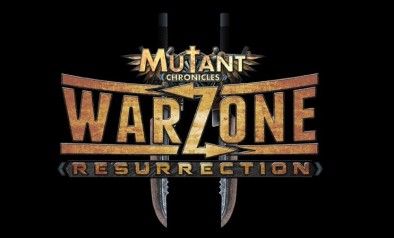

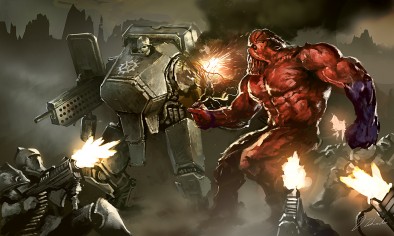
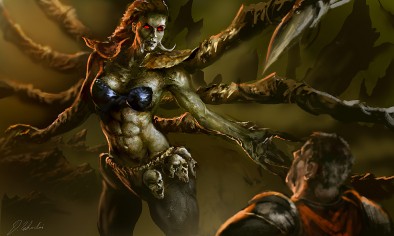
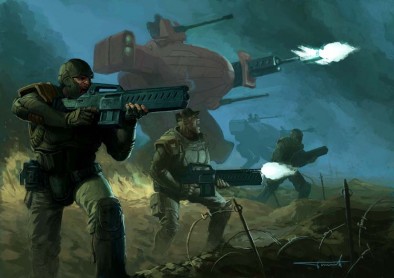
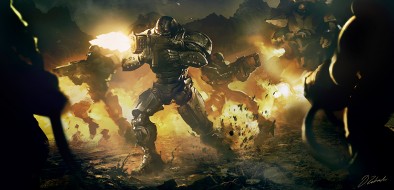
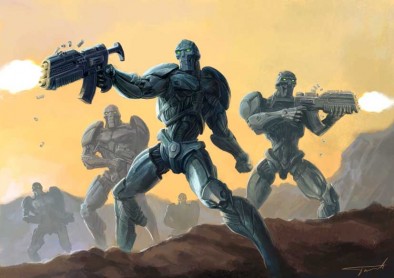
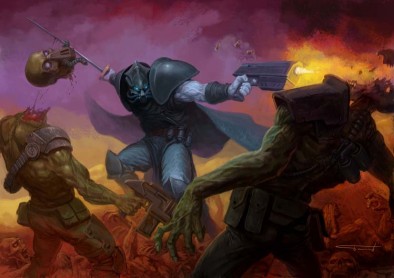
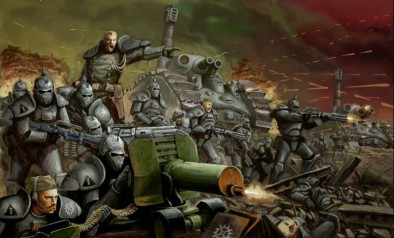
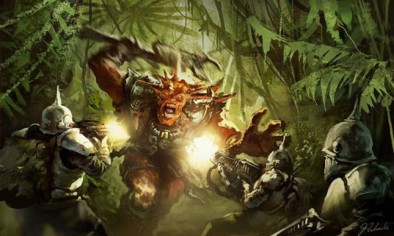
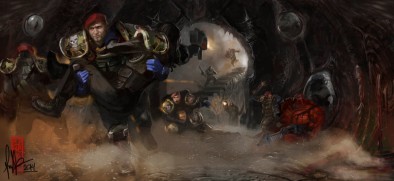
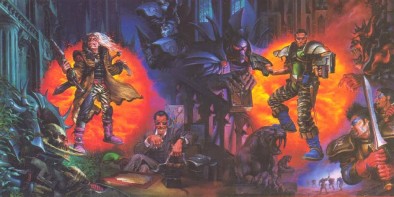
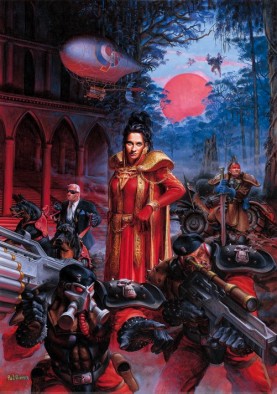
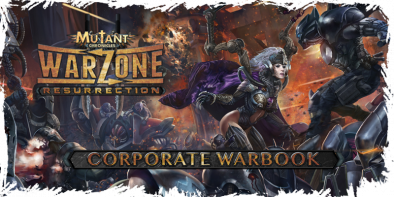
































Will be interesting to see the cross-compatibility with Siege of the Citadel.
I have som WZR DL and I would like to use them in the boardgame 😀
Oh, one other fairly important change I forgot to mention is that a model does NOT start with 1AP if it begins it’s activation engaged with an enemy as long as it is at least two Sizes (SZ) bigger. This means that SZ (0) models such as basic infantry will not be able to lock SZ (2) bikes in CC by reducing their AP to 1 and the same goes for even bigger SZ (1) models when faced with SZ (3) models such as the light walkers.
Soooo…whats your opinon…is it an improvement or not…and why? Have not played 1st but am looking to gov 2nd a try. Thx! 🙂
Absolutely. Warzone Resurrection (1.0) brought the IP up to date in terms of rules and presentation, creating a game that played a bit like Warmachine but with alternating squad activations. It also featuted a deck building aspect that was considered unusual at the time but has since become more common as skirmish games seek to differentiate themselves from the competition. It did, however, hold on to a few trappings and complexities from original Warzone that were considered by some to be a bit cumbersome.. so Warzone Resurrection 2.0 isn’t a totally new game in that respect but a refinement of… Read more »
Thx for the inside!
I have started to buy these minis like mad. I just got all the starter boxes
Does it still have the rules for customisable heroes though? I remember regarding that as a feature in the last edition, but I haven’t been able to find any mention of it in the newer edition.
That’s correct. Warzone Resurrection (1.0) included simple rules for creating characters but it was really only suitable for creating Lords (minor characters). A deeper and more fully fleshed out system was released later in the Heroes of the Solar System PDF and those rules were suitable for building custom Warlords (e.g. leaders). Now the distinction between Lords and Warlords has been removed and they are all just ‘Characters’ the new system will have to work well at both levels. The plan is to release the character creation rules separately for 2.0, just as it was with Heroes of the Solar… Read more »